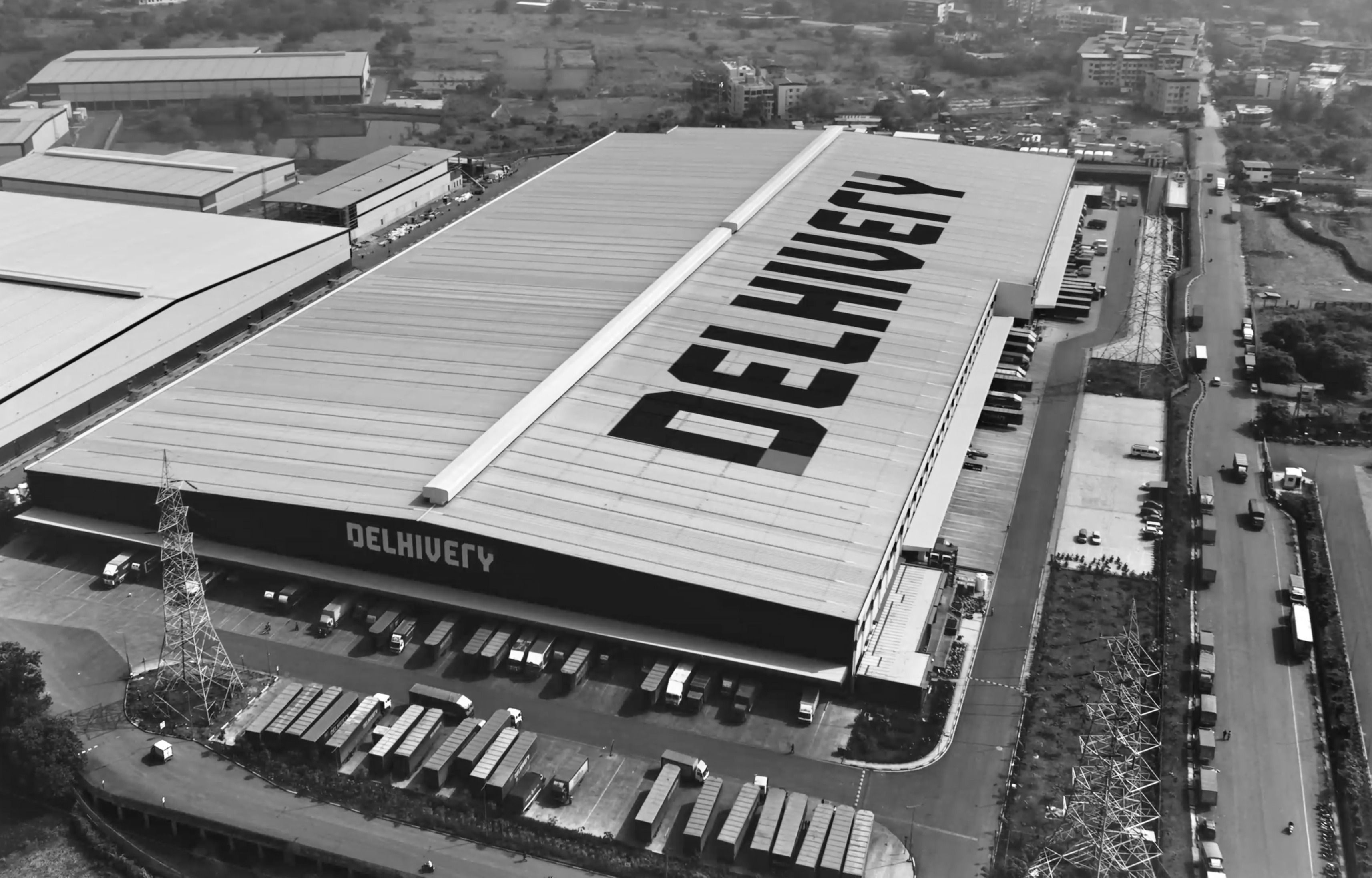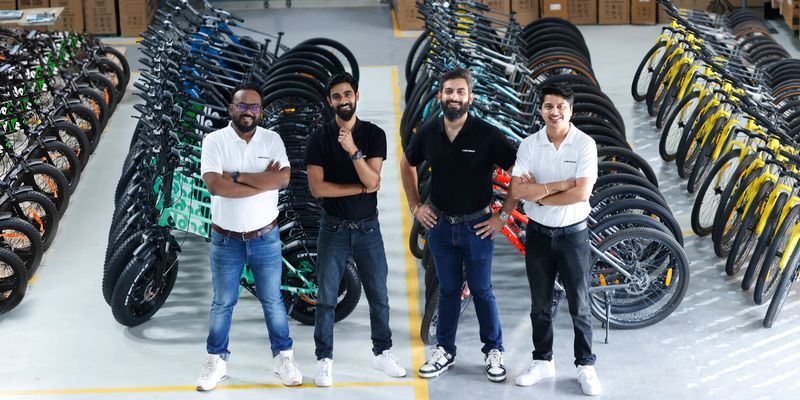
Lowe’s India
View Brand PublisherShaping customer journeys in retail: Lowe’s Manasvi Sharma talks omni-channel dynamics
Manasvi Sharma, Vice President of Omnichannel Platforms at Lowe’s India, unravels the intricacies of cutting-edge retail innovations, hyper-personalised experiences, and the seamless fusion of technology and customer-centricity.
In the dynamic world of retail, the concept of omnichannel is reshaping how businesses engage with customers across various touchpoints. This paradigm shift is particularly significant for complex big box retailers like Lowe's, where technology plays a pivotal role in orchestrating seamless experiences.
At , this ethos is deeply ingrained in every aspect of operations. From pioneering innovations with technologies like Augmented Reality (AR) and Virtual Reality (VR) to introducing revolutionary front-end experiences such as “Buy-Online-Pickup-In-store”, Lowe's is at the forefront of redefining the retail landscape.
Leading the charge in this dynamic space is Manasvi Sharma, Vice President of Omnichannel Platforms at Lowe's India, whose team is driving innovation both in terms of customer-facing solutions and behind-the-scenes optimisations. Recognising that the modern customer journey spans a myriad of touchpoints – from digital inspirations to in-store visits and beyond, Sharma emphasises the need for contextualisation and personalisation at every step.
In an exclusive conversation with YourStory, Sharma delves into the world of omnichannel retail and uncovers Lowe's commitment to innovation-driven customer journeys.
Edited excerpts from the interview:
YourStory: Could you walk us through your role at Lowe’s?
Manasvi Sharma: I joined Lowe's almost two years ago to lead the Omnichannel Platforms technology group. I also oversee Lowe's India innovation Charter, known as Catalyze, which fosters partnerships with startups to enrich Lowe's ecosystem and leverage innovative solutions.
In the Omnichannel platforms space, our primary focus is on creating platforms that streamline operations across digital channels, the contact centre, and in-store experiences. Essentially, our goal is to empower all channels where Lowe's conducts its buying and selling activities. We've achieved milestones that touch upon the core essence of a retail enterprise, such as revamping our order management systems.
By transitioning from legacy systems to internally developed solutions, we've undergone a fundamental shift. These changes have had a profound impact on our ability to offer enhanced experiences to our customers. They've enabled us to seamlessly integrate with modern finance and fulfillment systems, fostering adaptability and agility in our operations. These milestones propel us toward a more dynamic and customer-centric approach.
YS: How is the Omnichannel Platforms team structured?
MS: We have dedicated engineering and product teams located both in India and the U.S. Typically, the engineering teams are more prevalent in India, while the product teams are primarily based in the U.S. This distribution allows us to maintain close proximity to both the customer base and business operations. From a team headcount perspective, there's a relatively even split between India and the U.S. Each team is functionally divided into their respective areas to ensure efficient collaboration.
YS: What does omnichannel mean for a complex big box retailer like Lowe’s?
MS: Implementing a successful omnichannel strategy requires seamless integration of customer experiences across various channels. For companies like Lowe's, which have varied customer segments and the buy and sell of each product category demands unique journeys, technological architecture plays a crucial role. We prioritise the development of solutions that support these seamless experiences and align with our unique business processes and customer journeys.
Unlike industries where off-the-shelf proprietary software solutions may suffice, our focus on delivering personalised and differentiated experiences necessitates a more tailored approach. We leverage open-source software to build our technology infrastructure from the ground up, ensuring scalability and compatibility across different environments, including online, cloud, and in-store settings.
Our tech stack comprises a combination of robust open-source components, including data technologies, messaging platforms, and middleware.
YS: In retail, the shopping experience significantly influences customer loyalty. Could you discuss some of the features developed by Lowe's that have effectively enhanced customer front-end experiences?
MS: At Lowe’s, our approach focuses on delivering personalised user experiences through tailored searches and customised discovery options. Moreover, we recognise the importance of addressing often-overlooked aspects of the purchasing journey, such as delivery and installation scheduling. Through thoughtful personalisation, we aim to streamline these processes, ensuring that they align seamlessly with our customers' preferences and timelines.
In addition to simplifying the shopping experience, we understand that home-related purchases can be technically complex. That's why we offer personalised recommendations for complementary products, whether it's advising on accessories for kitchen appliances or suggesting compatible components such as brushed with paints. By providing tailored guidance, we empower our customers to make informed decisions and navigate their purchasing journey with confidence.
YS: What are some notable market trends you've noticed in omnichannel retail, and can you highlight a few key differences or similarities between the trends in the U.S. and India?
MS: The retail scene in the U.S. and India has some interesting differences. Fundamentally, these markets operate within slightly different consumer cohorts. In the U.S., there's a prevalent culture of DIY (Do It Yourself) among customers, whereas in India, there's a greater reliance on professionals or a "do it for me" approach. However, we're witnessing a shift in the U.S., particularly among millennials, towards embracing professional services. Despite these nuances, certain customer preferences and expectations remain consistent across both markets, largely influenced by their digital experiences and interactions.
The evolving landscape of retail trends extends beyond the sector itself and permeates into various industries. One notable trend is the proliferation of customer touchpoints, which has experienced exponential growth. Particularly in retail, these touchpoints are increasingly streamlined and friction-free, mirroring the seamless experiences offered by digital platforms like Instagram or Pinterest. The challenge lies in integrating these frictionless digital experiences with physical interactions to create a cohesive customer journey.
The overarching trend in the retail landscape revolves around creating integrated journeys across diverse touchpoints. Whether it's leveraging digital inspiration platforms or ensuring seamless transitions between online and offline interactions, the focus remains on delivering friction-free experiences that resonate with modern consumers.
YS: Data undoubtedly plays a pivotal role in personalising customer experiences. Could you elaborate on how data significantly influences this process? Additionally, could you share an example of a notable improvement achieved through data-driven initiatives?
MS: When it comes to personalisation, I believe we're not just talking about basic customisation; we're delving into what we commonly refer to as hyper personalisation. In the realm of home improvement, it's not merely about tailoring experiences to individual customers; it's about customising for their unique living spaces. After all, a customer's home is their sanctuary, their central point of focus.
In navigating this omnichannel journey, we encounter various touchpoints—digital, physical in-store interactions, and even over-the-phone engagements. One of the key focus for us at Lowe's is aggregating data across these diverse channels and structuring it into a coherent narrative. This is where robust frameworks and data collection stacks come into play, forming the backbone of our personalisation efforts.
Speaking of impactful transformations driven by data, let's consider some tangible examples. Take, for instance, our ability to suggest not just products but also accompanying accessories and hardware in a highly intuitive manner. This level of intelligence stems from our deep understanding of product compatibility, catering to both professional and DIY enthusiasts alike. By streamlining the shopping process, we alleviate the need for customers to scour for additional parts, enhancing their overall experience.
Yet, the true essence of data-driven innovation lies in the less visible but equally critical domains, such as supply chain optimisation. At Lowe's, we boast of an extensive network of warehouses and distribution nodes across the U.S. Ensuring efficient product fulfillment is paramount, whether it's consolidating orders for swift delivery or optimising sourcing channels to minimise delays and costs. This intricate dance of data enables us to orchestrate seamless, cost-effective deliveries, enriching the customer experience from start to finish.
YS: What are your thoughts on cutting-edge technologies such as Augmented Reality (AR) and Virtual Reality (VR), and how do you envision their potential to revolutionise omni-channel experiences?
MS: I think new-age technologies like AR and VR hold immense potential to revolutionise the omnichannel experience. However, one key hurdle that remains largely unresolved is the accessibility of these technologies. Despite the excitement surrounding innovations like the Apple Vision Pro and the emergence of mixed reality headsets from companies like Samsung, widespread accessibility remains a challenge.
The real question is: How can we make AR and VR experiences more accessible to the average consumer? While some strides have been made in this direction, there's still work to be done. Currently, these technologies are primarily integrated into high-involvement purchases, such as kitchen designs, where consumers can visualise their projects in a more immersive manner. Lowe's, for instance, has been at the forefront of such initiatives, as evidenced by our collaboration with Apple Vision Pro. Lowe's Style Studio that we unveiled recently for Apple Vision Pro, revolutionizes home improvement by allowing customers to visualize and design their dream kitchen in minutes through immersive spatial computing.
As these technologies become more accessible, the potential for them to permeate low-involvement purchases grows. Imagine a future where experiencing virtual environments is as simple as pulling out your smartphone from your pocket. This evolution could bridge the gap between online and offline shopping experiences to a significant extent.
However, it's essential to acknowledge that while AR and VR can enhance the digital shopping journey, they can't entirely replace the tactile experience of physical retail. There's still something irreplaceable about touching and feeling a product before making a purchase decision. Nevertheless, AR and VR have the power to enrich the customer experience by offering immersive, interactive elements that bring products and environments to life in ways previously unimaginable.
YS: What advice do you have for young tech talent as they embark on their career paths? Are there any key insights or experiences that have influenced your own journey in shaping your career in technology?
MS: Technology is ever-evolving. While it's essential to stay updated on the latest tools and trends, the real constant lies in understanding customer problems and adopting a platform-oriented mindset.
I would advise aspiring tech professionals to prioritise gaining a deep understanding of the businesses they work in. This foundational knowledge provides invaluable insights that can guide technology decisions effectively. It's about aligning technology solutions with real-world business challenges.
It's important to foster a culture of experimentation, embracing a willingness to learn and adapt to newer technologies.
While it is crucial to explore and experiment with emerging technologies, it is also equal essential to embrace a willingness to fail fast for a dynamic and adaptive approach. This approach not only accelerates learning but also minimises the impact of failures on organisational resources. Ultimately, the ability to bridge the gap between business objectives and technological solutions is what sets exceptional technologists apart.
Keen to shape the future of omnichannel retail? Explore careers at Lowe’s India, across Technology, Business Services, Analytics, Merchandising and HR.











